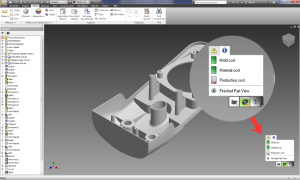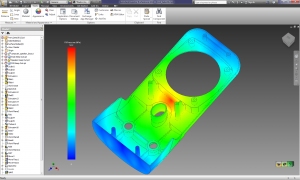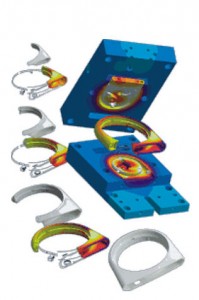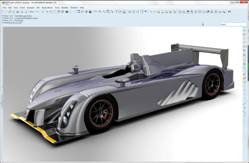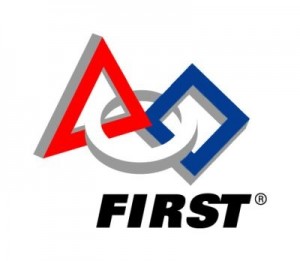 Home appliances aren’t what they used to be. Consider, for example, washers and dryers. At this week’s PlanetPTC conference, Fred Bellio, CIO of Whirlpool’s Global Product Organization, and Jeff Burk, Director of Whirlpool’s Constellation Program Management Office, described some of the complexities of his company’s Maytag Maxima line of washers and dryers. Washers and dryers from 50 years ago (when my mother was doing the family’s laundry) were mostly mechanical, with an electric drive motor, a timer, and a few switches, solenoids and relays. The Maxima line are about one-third mechanical, one-third electrical/electronic, and one-third software.
Home appliances aren’t what they used to be. Consider, for example, washers and dryers. At this week’s PlanetPTC conference, Fred Bellio, CIO of Whirlpool’s Global Product Organization, and Jeff Burk, Director of Whirlpool’s Constellation Program Management Office, described some of the complexities of his company’s Maytag Maxima line of washers and dryers. Washers and dryers from 50 years ago (when my mother was doing the family’s laundry) were mostly mechanical, with an electric drive motor, a timer, and a few switches, solenoids and relays. The Maxima line are about one-third mechanical, one-third electrical/electronic, and one-third software.
Who would have guessed that a clothes washer could have a million lines of software source code, and use WI-fi for remote diagnostics (and even electrical load shedding?)
Whirlpool is the world’s #1 major appliance company, with $19 billion in revenue, and around 70,000 employees. Its products are developed globally, and sold in over 170 countries. While it may not face the same challenges as large automotive or aerospace companies, that doesn’t mean that it’s got things easy when it comes to product development.
Whirlpool’s PLM strategy
To continue to be competitive in the appliance business, Whirlpool needs to implement a top-notch product development process. The Whirlpool program chartered to deliver that process is code named Constellation.
Constellation’s goals are to:
- Leverage Whirlpool’s global footprint and scale,
- Enable end‐to‐end lean product development,
- Enhance collaboration across functions, geographies, & supply chain, and,
- Provide a real time single source of product information.
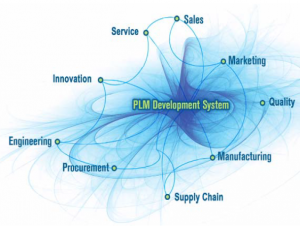 The Constellation program provides Whirlpool with a year-by road-map for implementing PLM technology. This year there are projects related to CAD, core PLM, design quality, cost management, product & portfolio management, service, strategic sourcing, and product quality. It’s not a trivial amount of work. (You can look at Whirpool’s PlanetPTC presentation on Constellation here.)
The Constellation program provides Whirlpool with a year-by road-map for implementing PLM technology. This year there are projects related to CAD, core PLM, design quality, cost management, product & portfolio management, service, strategic sourcing, and product quality. It’s not a trivial amount of work. (You can look at Whirpool’s PlanetPTC presentation on Constellation here.)
Ultimately, the benefits Whirlpool hopes to gain include:
- Shorter product development cycles,
- More consumer relevant innovation,
- More product variants from fewer platforms, and,
- Best cost and best quality position.
Whirlpool and PTC
Whirlpool has been a long-term PTC customer, first using Pro/E in 1986, and standardizing on it in 1990. The company entered into a strategic relationship with PTC in 2010, and currently uses a wide variety of PTC products, including ProE/Creo, Windchill ProjectLink, Windchill PDMLink, WQS, MathCAD, Integrity, PPMLink, Arbortext, Isodraw, and Product View.
My sense is that Whirlpool is a very good example of an ideal PTC customer. Their particular combination of needs are a great match for PTC’s technology. (That may be because PTC pays attention to their customers’ needs when planning their technologies.) Two PTC technologies of special note for Whirlpool are likely to be application lifecycle management (ALM), and service lifecycle management (SLM.) I’ll be writing more about those two technologies in the near future.
While you could make an argument that Whirlpool could be as well-served by any number of other CAD programs (including SolidWorks, Inventor, and Solid Edge) as they are by ProE/Creo, I think there’s an equally strong (or stronger) counter-argument. Creo 2.0 includes some capabilities of great value to a company such as Whirlpool. The thing that comes to my mind first is integrated parametric, direct, and organic subdivision surface shape modeling. But the hot ticket is the new Creo 2.0 Options Modeler, which, when coupled with Windchill, is the no-brainer choice for building multiple product variants on a single platform.
Even good examples have flaws
Listening to Jeff Burk describe Whirlpool’s Constellation strategy at the PlanetPTC conference, it occurred to me that the company does seem to have a solid grasp on where it’s going with PLM. I’d expect this: Bellio was the PLM Practice Director at Mercury Marine’s PLM Services group (a company that Siemens PLM highlighted at their recent customer conference.) He also worked in PLM strategy and deployment at Bombardier—and aerospace is where the rubber meets the road for PLM (to strain a metaphor.) Burk has 25 years at Whirlpool, and knows what makes the company tick.
Still, I was curious: Whirlpool has been using Pro/E for 26 years. Do they have the CAD portion of their PLM strategy down? I asked Bellio and Burk about three product design-centric best practices that are generally thought to make a big difference in time to market, cost, and quality: systems engineering, model-based development (e.g., no drawings), and up-front CAE.
Bellio and Burk agreed that each of these are of real value, and that Whirlpool is very interested in them. But, Whirlpool isn’t doing any of them yet.
Why? Start with model-based development: (MBD): It’s simply difficult to change from a drawing-centric to a model-centric culture. Even if good software tools for doing 3D GD&T are available (and they are available for ProE/Creo, both from PTC, and from third-parties such as Sigmetrix), engineers are comfortable with drawings, and aren’t inclined to change, if they can help it. The only industries in which there is widespread adoption of MBD are aerospace and, to a lesser degree, automotive. (This will change over time: MBD is a hot industry trend.)
Similarly, implementing systems engineering and up-front CAE require cultural and process changes that are not natural for CAD users (and particularly ProE users) who’ve invested a lot of time and effort in learning how to do it the way they’re doing it now. You can’t just “install” these practices in a product development process, and expect everyone to jump into using them.
This stuff takes time, and commitment
Looking at Whirlpool’s example, I wonder: do any of PTC’s customers take “full advantage” of all (or even most) of the technology that PTC has to offer? I suspect the answer is “no.”
As a start, PTC offers a lot of technology. A lot of it overlaps with technology offered by competitive companies—and many customers use a mix of tools from a number of suppliers.
Yet, beyond issues of scale, the process of implementing PLM in a company, whether small or large, takes time and commitment, no matter which technology suppliers you use. There is no magic bullet that will make the process easy. My sense is that the folks at PTC are focused on doing what they can to make the process easier. While I still think PTC has a long way to go in making their technology more accessible for non-experts, I’ve seen enough progress that I’m encouraged.

 For inexperienced designers, Simulation DFM provides quick feedback to help them avoid rookie mistakes. It’s sort of like an “idiot light” on a car’s dash, that warns you when something is wrong. And while old-hands might say they prefer gauges to idiot lights, experience has shown that idiot lights are useful to experts (even F1 drivers and fighter pilots) for catching their attention, and getting them to actually look at the gauges.
For inexperienced designers, Simulation DFM provides quick feedback to help them avoid rookie mistakes. It’s sort of like an “idiot light” on a car’s dash, that warns you when something is wrong. And while old-hands might say they prefer gauges to idiot lights, experience has shown that idiot lights are useful to experts (even F1 drivers and fighter pilots) for catching their attention, and getting them to actually look at the gauges.